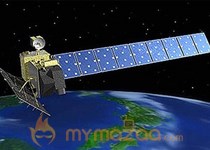A 20-year-old satellite that measured the ozone layer is expected to crash back to Earth late next week, but NASA said Friday it still does not know where it will fall.
The US space agency stressed that the risk to public safety from the Upper Atmosphere Research Satellite (UARS) is "extremely small," and said that most, but not all, of the gear will burn up on re-entry into Earth's atmosphere.
"Re-entry is expected Sept. 23, plus or minus a day. The re-entry of UARS is advancing because of a sharp increase in solar activity since the beginning of this week," NASA said in a brief update on its website.
"Safety is NASA's top priority," it added, noting that throughout history, there have been "no confirmed reports of an injury resulting from re-entering space objects."
The decommissioned satellite could land anywhere between 57 degrees north latitude and 57 degrees south latitude, a vast swath of populated territory. Predictions will only get more precise as the landing approaches.
The UARS satellite was sent into orbit in 1991 by the space shuttle Discovery. The 35 by 15 foot (three by 10 meter) spacecraft weighed 13,000 pounds (5,900 kilograms) and toted 10 scientific instruments for measuring wind, temperature and ozone chemistry. It was officially decommissioned in 2005.
"Although the spacecraft will break into pieces during re-entry, not all of it will burn up in the atmosphere," NASA said. "It is impossible to pinpoint just where in that zone the debris will land, but NASA estimates the debris footprint will be about 500 miles (800 kilometers) long," the space agency said.
It also urged anyone who comes across what they believe may be space debris not to touch it, but to call authorities for assistance. (AFP)







